Hope’s F20 pedal has been around for 10 years by now, and although there was a lot to like about that pedal, it was ultimately let down a bit by a lack of outright grip compared to the market leaders in this category. Hope has gone back to the drawing board and has come up with something that not only addresses the shortcomings of its predecessor but marks a giant leap forward in terms of platform size, feel, and grip. Keep reading to learn more about the all-new F22!
Hope F22 Pedal Highlights
- Redesigned platform
- 5-axis machined body (in Barnoldswick, UK)
- Larger concave dome profile
- Asymmetric and tapered shape
- Longer and adjustable, hex-shaped pins
- Enhanced concavity with shorter pins used towards the center of the platform
- Reverse loading pins
- Proven internals from F20 remain
- New high-strength, heat-treated and plated CroMo axle
- Three cartridge bearings and an IGUS bushing
- Internal and external sealing
- Fully serviceable and re-buildable
- Six color options
- Weight: 360 grams (pair, verified)
- Two-year warranty
- MSRP: £145.00 GBP // €180.00 EUR // $183.00 USD
Initial Impressions
The F20 got its name from the 20 pins found on each pedal, and in keeping with the nothing if not obvious Hope naming convention, it came as no surprise to find 22 pins on the new F22. Unlike the F20, the pins on the F22 have been placed all around the perimeter of the platform, with no pins present in the middle. We were also glad to see that the pins on the new pedal are a lot more aggressive, both in shape and in length – the pin design was one of the reasons that the F20 let us down a bit in the grip department. The front and rear pins screw in from the back to make replacing any damaged pins easier and to avoid having a grub screw type pin snap off and remain stuck in the threads, and there are washers provided that can be used to reduce the pin height to tone down the grip a bit.


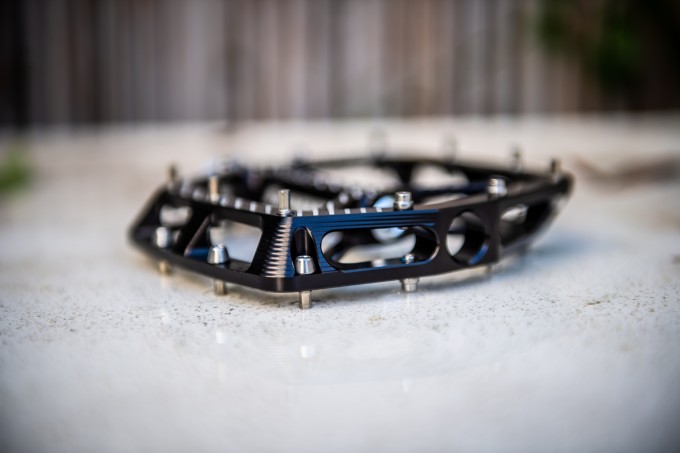
The F22 platform itself has also been completely redesigned, to offer more concavity and much better mud-shedding capabilities thanks to a more open platform body. As an additional bonus the F22 has also shed a significant amount of weight, at 360 grams for the pair it is among the very lightest quality flat pedals out there at the moment (and there is even a Ti-axle upgrade announced if you want to go lighter still).
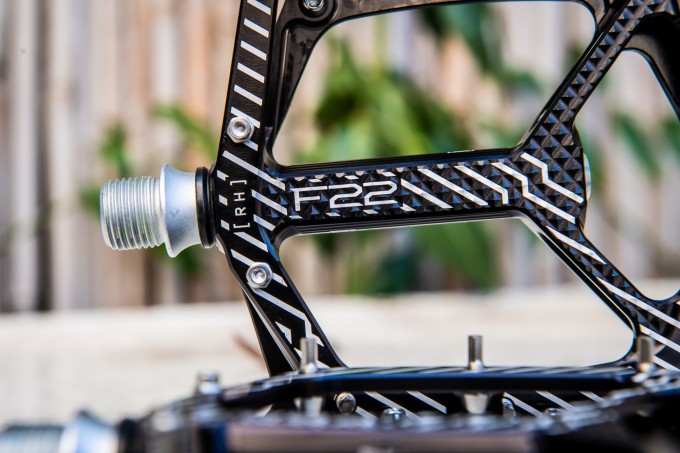
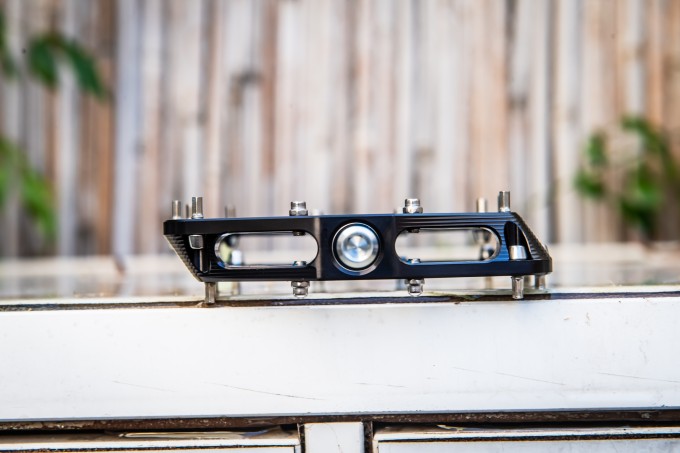
When it came to the internals, Hope stuck with the proven design of the F20 – a good move, in our opinion. With a total of 3 seals, 3 bearings and one large bushing, this axle system will take a beating and keep trucking through pretty much anything. Hope also says they have modified the axle itself to make it even stronger and more impact resistant. As for the pedal body itself, Hope left a fairly significant amount of material in the corners, an area that is very exposed to direct impact and where pins can easily bend or strip their sockets. A clever way to save weight while ensuring the pedal remains strong enough in key areas.
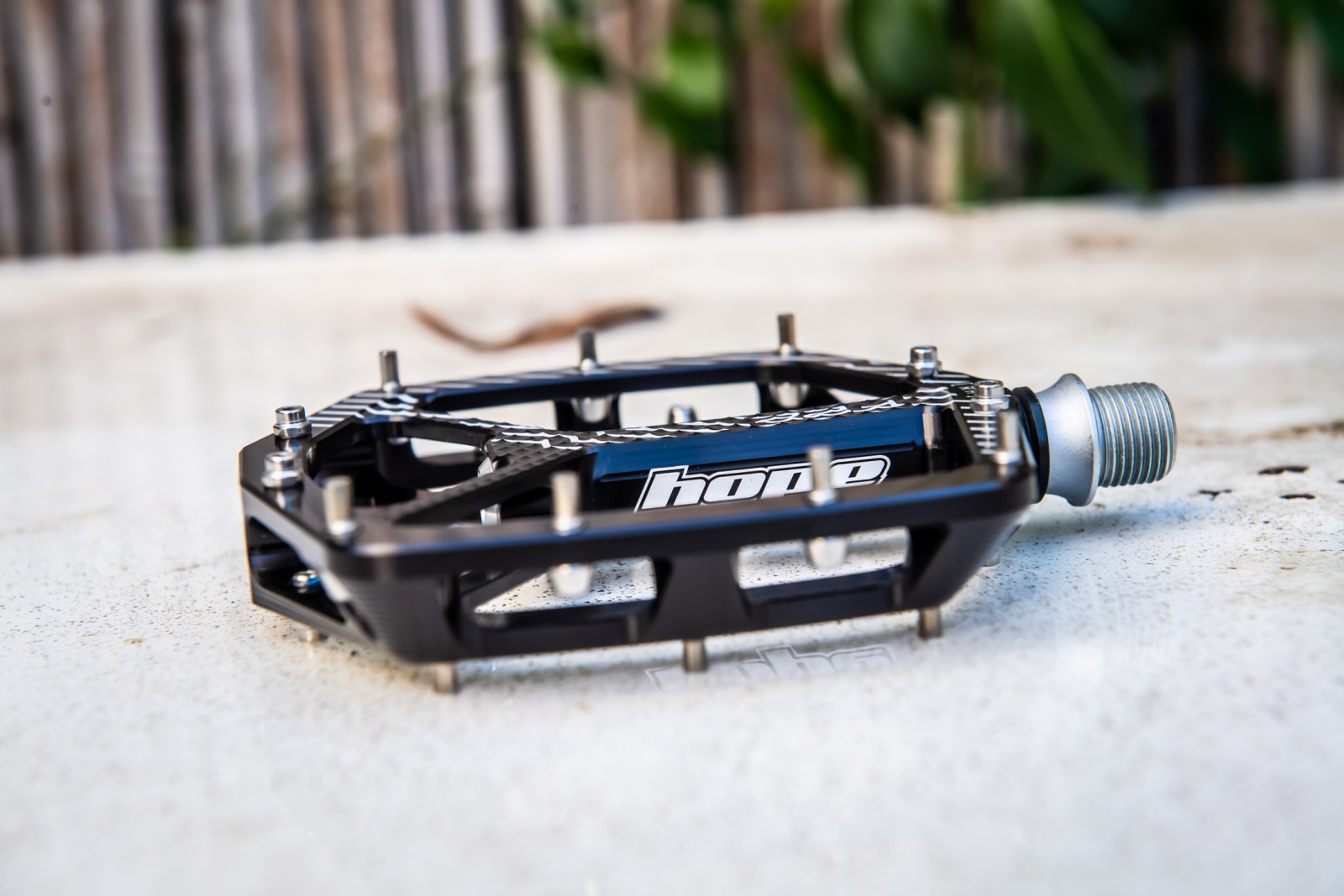
And now for the most important part of any pedal design: the actual shape and dimensions. Hope learned from the F20 and went with a new shape that offers more concavity, both front to back and side to side. The concavity is not overly pronounced in the pedal body itself, but taken to the next level by the pins. Long and sharp hexagonal pins are placed at the front and the rear of the platform, with smaller, rounded stubs used in the middle. The concept is very close to the DMR Vault, the only difference being the hexagonal shape of the pins on the F22 vs. the grub screws found on the Vault.
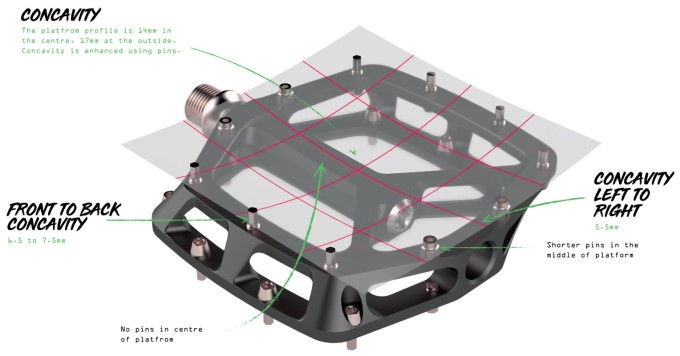
To see how the F22 compares to the best in the game, we busted out the tape measure. Vital’s long-standing Flat Pedal Face Off introduced a few key metrics to help provide a semi-scientific base for evaluating one product against another, and you can find these key measurements listed out for the F22 below:
- Effective Concavity: 7mm
- Pin-To-Axle (PTA): 112mm
- Weight: 360 grams
Looking at these numbers tells the story of how the F22 is different to the F20: the PTA has grown, thanks to Hope stretching out the pedal body towards the front part of the platform (the PTA is the distance from the axle to the outermost pin, measured from where the axle bottoms out on the crank arm). Hope also increased the offset between the two platform sides to provide the pedal with the ability to slide off obstacles as opposed to hanging up on them. Together with the impressively low weight (and great grip, more on that later), these updates should allow the F22 to challenge for the very top spots when we go to update the Face Off next time.
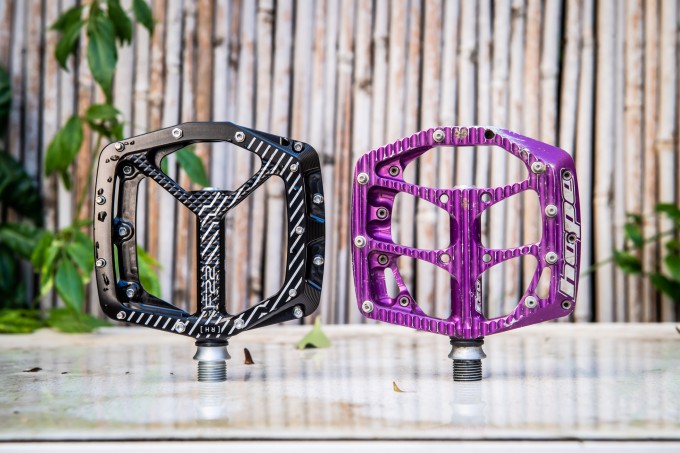

On The Trail
Before you can install your new F22 pedal on your bike, you have to screw in the pins yourself. This is a bit fiddly and annoying perhaps, but it is also a good time for you to decide whether to add any of the included, optional washers behind the longer, hexagonal pins to tone down the grip ever so slightly, or to run them at their full length (the latter is what we opted for here).

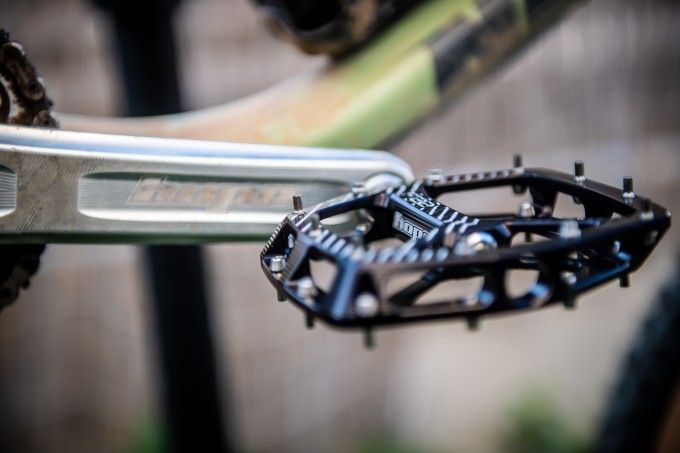
On the trail, our first impressions of the new F22 were very positive. The foot finds its natural position very easily, and the grip is now up there with the best pedals in the world. The size and shape of the F22 feel great under the foot, and we’ve tested with several different flat pedal shoes to confirm that it will work equally well across different types of soles as well.
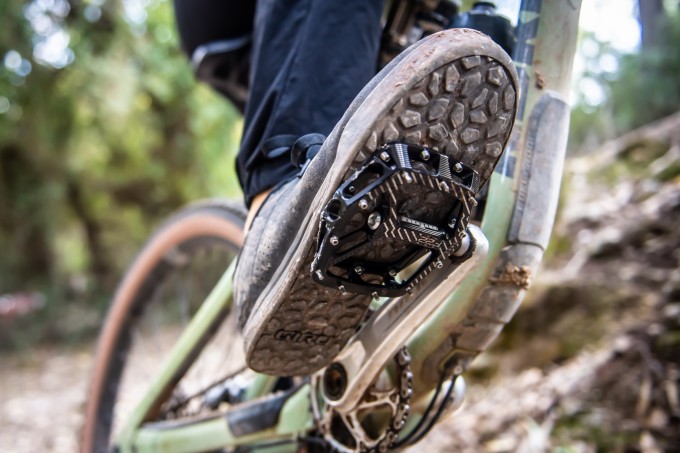
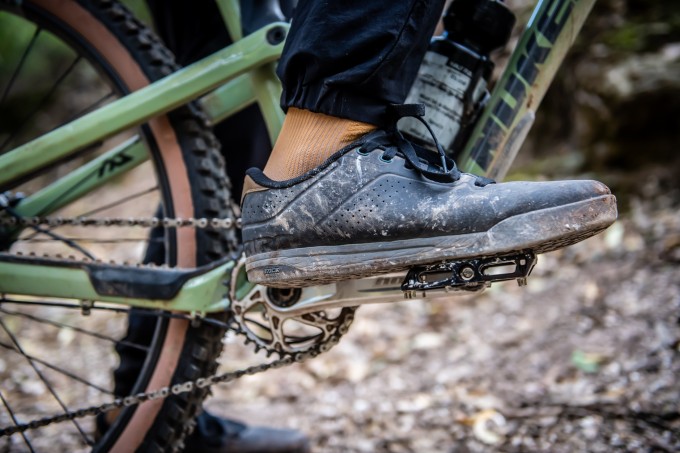
In action, the F22 delivers a ton of confidence thanks to the aforementioned grip and pin placement. People with larger feet will appreciate the generous dimensions of the platform, while Hope took care to keep the overall profile in check – the pins are placed quite close to the outer edges so as to minimize any unnecessary overhang. If you want a big pedal that can still squeeze through a tight trail network, the F22 looks like a top choice.
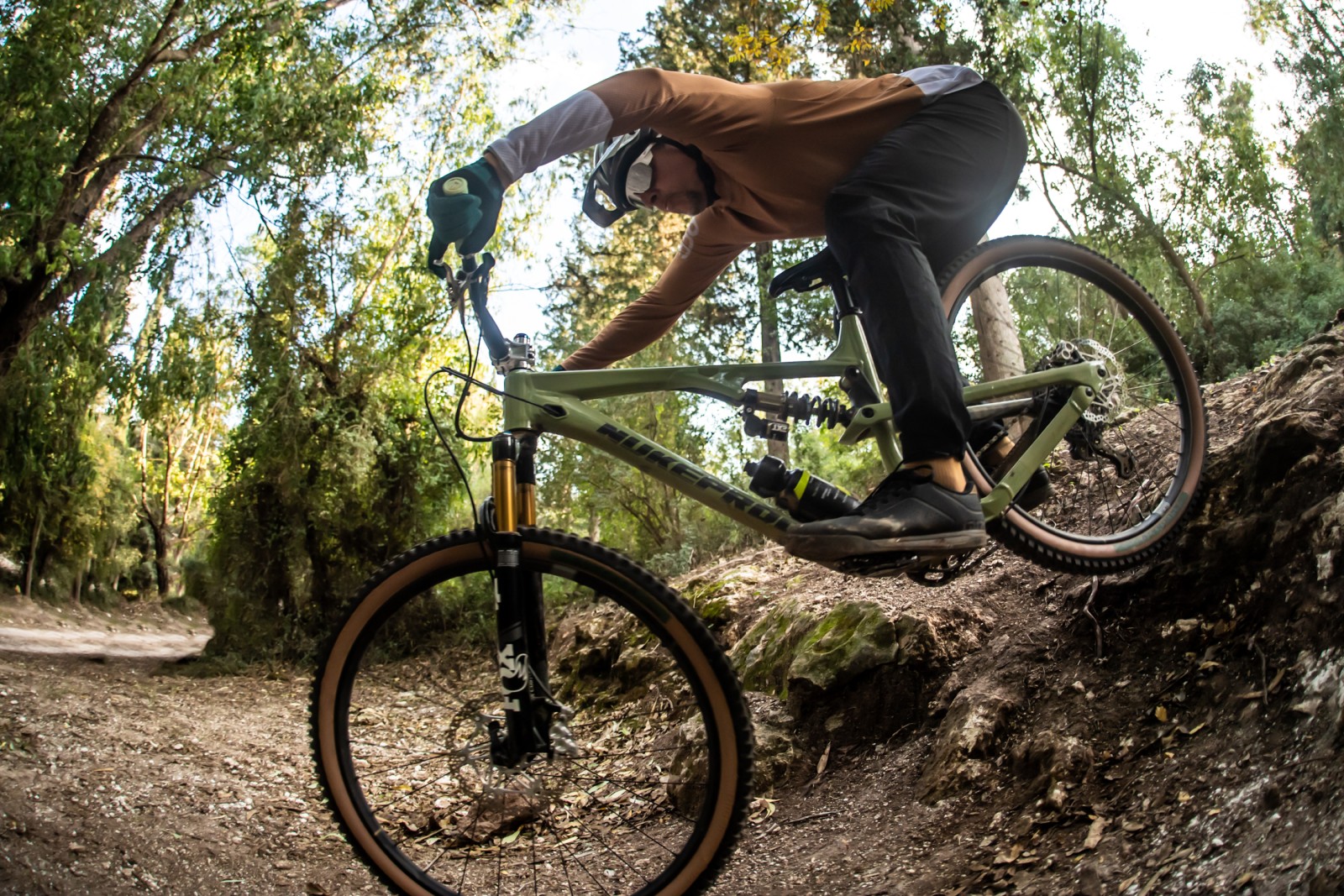
We’ve only been able to put in a handful of rides with the F22 at this point, but we’ve still managed a few good rock strikes in that time and we can confirm that the pedal seems built for abuse. We have a pair of F20s that have seen action on and off for the past 6 years, and they are still going strong, so we have high hopes when it comes to the longevity of the F22. As with all Hope products, full rebuild kits are available and you should be able to get many seasons out of your F22s.
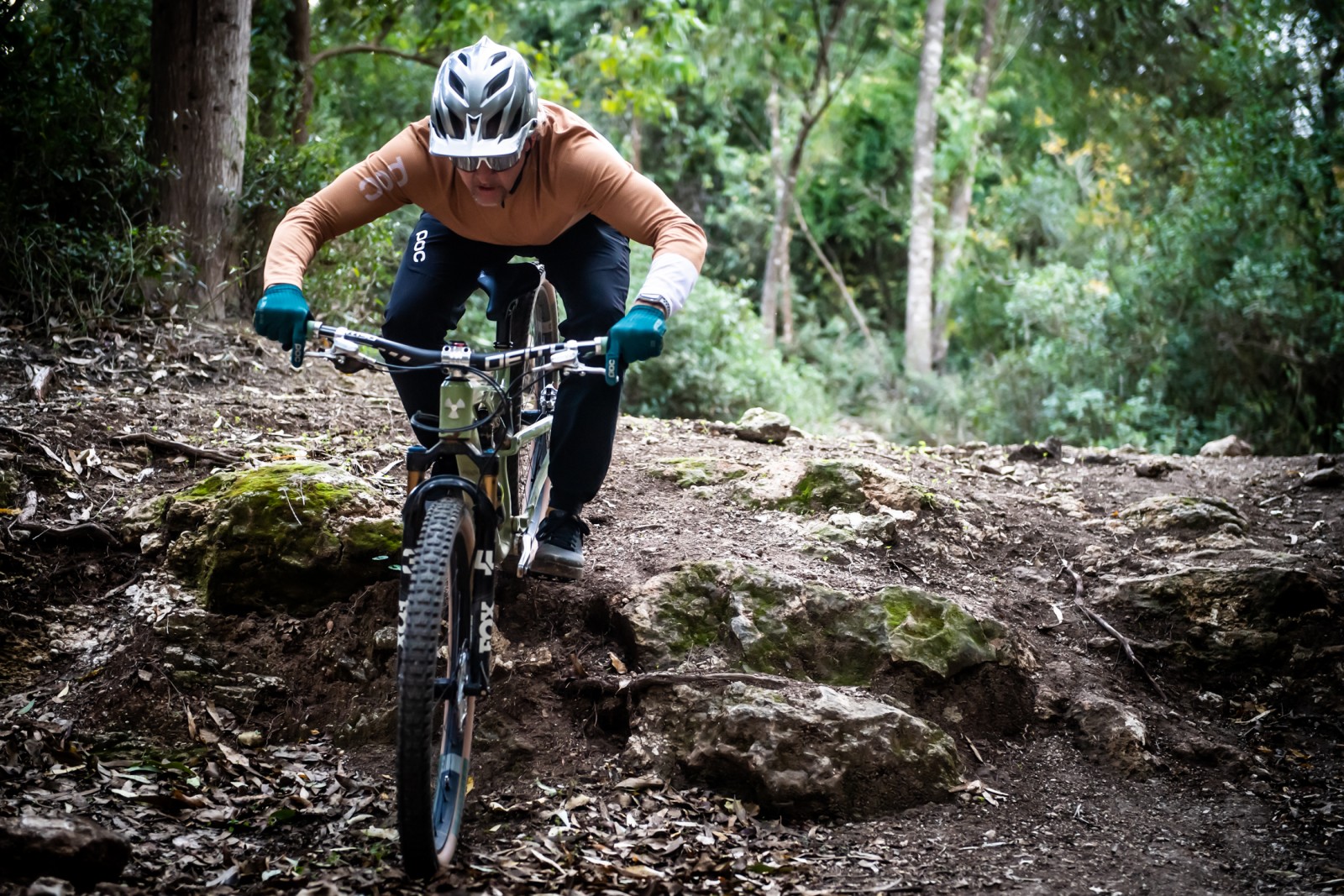
What’s The Bottom Line?
Hope’s old F20 scored good points in the reliability department, but it had definitely been left behind in terms of platform dimensions and grip. The F22 puts Hope right back in the running and our initial observations and impressions point to a pedal that will challenge the rest of the field for the very top spot. It is among the more expensive options out there, but in this case, we feel that the F22 delivers value for money and based on the F20 track record, should see you through many a happy season of riding.
More information at: www.hopetech.com.
About The Reviewer
Johan Hjord - Age: 49 // Years Riding MTB: 17 // Weight: 190-pounds (87-kg) // Height: 6'0" (1.84m)
Johan loves bikes, which strangely doesn’t make him any better at riding them. After many years spent practicing falling off cliffs with his snowboard, he took up mountain biking in 2005. Ever since, he’s mostly been riding bikes with too much suspension travel to cover up his many flaws as a rider. His 200-pound body weight coupled with unique skill for poor line choice and clumsy landings make him an expert on durability - if parts survive Johan, they’re pretty much okay for anybody. Johan rides flat pedals with a riding style that he describes as "none" (when in actuality he rips!). Having found most trail features to be not to his liking, Johan uses much of his spare time building his own. Johan’s other accomplishments include surviving this far and helping keep the Vital Media Machine’s stoke dial firmly on 11.
Photos by Johan Hjord







View replies to: First Ride: Hope’s All-New F22 Flat Pedal Delivers Outstanding Performance
Comments